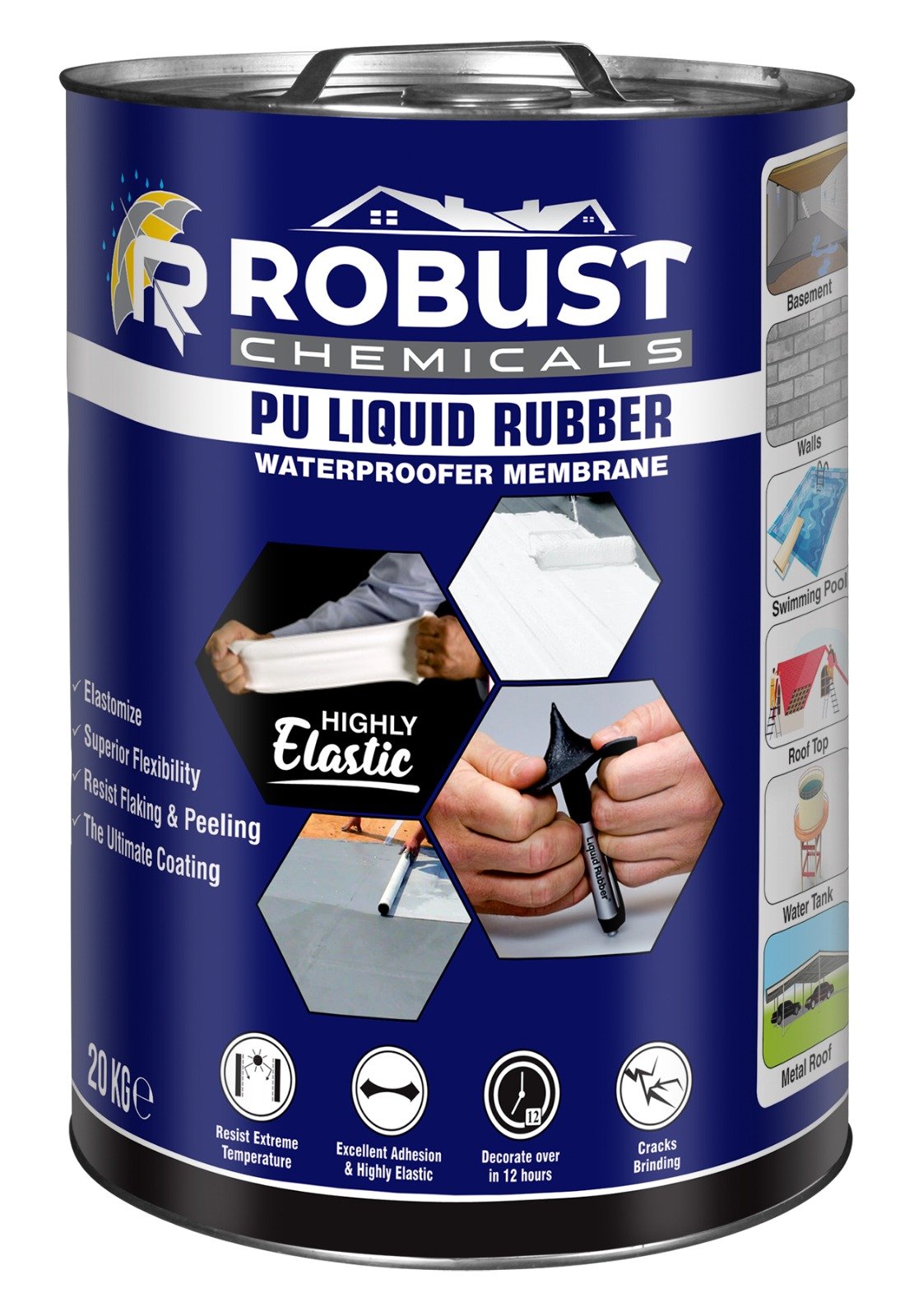PU Liquid Rubber is a cutting-edge, cold-applied, single-component polyurethane-based waterproofing membrane that offers unparalleled protection for a wide variety of structures. It has gained significant popularity in both residential and commercial construction sectors due to its exceptional elasticity, strong adhesion, and long-lasting durability. Once applied, PU Liquid Rubber cures into a seamless, rubber-like layer that fully adheres to the substrate, creating a continuous waterproof barrier without joints or seams — eliminating the risk of water ingress through gaps or overlaps.
One of the most valuable features of PU Liquid Rubber is its high elasticity, often exceeding 400%, which enables it to absorb structural movements and bridge existing or future cracks with ease. This flexibility makes it highly effective in regions subject to temperature fluctuations, structural shifts, or seismic activity. Moreover, it boasts outstanding resistance to UV rays, aging, and a wide range of environmental and industrial chemicals, ensuring its performance remains stable over years of exposure to harsh outdoor conditions.
It is compatible with a variety of substrates including concrete, wood, metal, asphalt membranes, and bitumen-based surfaces. Whether you are waterproofing rooftops, terraces, balconies, bathrooms, foundations, podium decks, water tanks, or green roofs, PU Liquid Rubber offers a solution that is both robust and versatile.
From an application perspective, PU Liquid Rubber is user-friendly and time-saving. It can be applied using a brush, roller, or airless spray system, depending on the size and nature of the project. As it is cold-applied, there is no need for heating or specialized tools, which improves safety and reduces labor costs. Additionally, it forms a vapor-permeable membrane, allowing trapped moisture within the substrate to escape — an essential property for concrete structures that may retain internal moisture.
PU Liquid Rubber also contributes to sustainability goals. Many formulations are free from solvents and VOCs (volatile organic compounds), making them environmentally friendly and suitable for use in enclosed or sensitive areas such as water reservoirs, kitchens, and hospitals. With a service life that can extend over 20 years when properly applied, it is a cost-effective long-term investment that significantly reduces maintenance and repair cycles.
